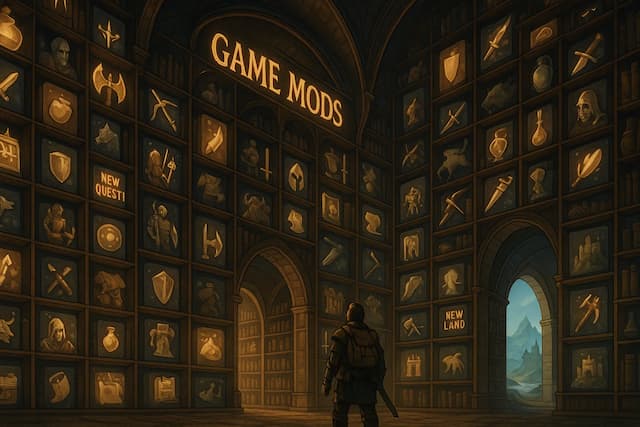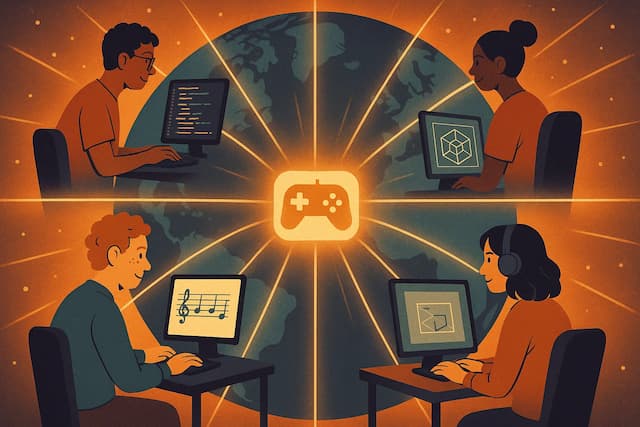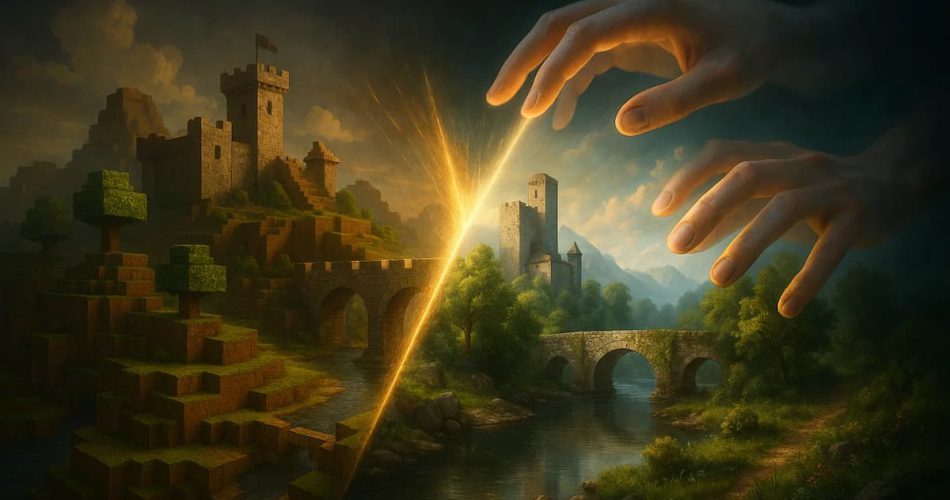Boot up a copy of The Elder Scrolls V: Skyrim today, more than a decade after its original release, and you can make it look and play like a title developed yesterday. High-resolution textures, advanced lighting physics, modernized combat, and thousands of new quests await. This digital renaissance isn’t the work of the original developer; it’s the remarkable achievement of a global, volunteer-driven effort. This is the power of game modding communities.
In an industry where games often have the lifespan of a mayfly, these dedicated groups of fans have become the unsung librarians and architects of gaming’s legacy. They are not just tweaking games; they are actively preserving them, transforming obsolete software into living, breathing worlds for new generations. This is a testament to player passion, and on a platform celebrating these community achievements like Dafy Gaming Hub, we believe their work is one of the most vital forces in the entire gaming landscape.
The Lifespan Problem: Why Old Games Fade Away
Most video games are destined to become obsolete. This isn’t a malicious plan but an inevitable consequence of technological progression and business realities. A game released in 2005 was built for hardware and software that is ancient by today’s standards. This creates several key problems that contribute to a game’s decline:
- Technical Obsolescence: A classic game might not run on modern operating systems like Windows 11 without significant workarounds. It may lack support for widescreen monitors, high resolutions, or modern controllers, making it physically difficult and unpleasant to play.
- Publisher Abandonment: Once a game is no longer commercially viable, publishers and developers move on. Official servers are shut down, bug-fixing patches cease, and the game is left in an “as-is” state, warts and all. Sometimes, games are even delisted from digital storefronts, erasing them from mainstream access entirely.
- Dated Mechanics and Graphics: What was revolutionary a decade ago can feel clunky and visually jarring today. Outdated user interfaces, simplistic AI, and low-polygon graphics can be significant barriers for players accustomed to modern design sensibilities.
Without intervention, these factors ensure that even the most beloved classics will eventually fade into digital dust, accessible only to the most dedicated retro enthusiasts. It’s here that the concept of gaming preservation becomes more than an academic idea; it becomes a rescue mission.
What Modding Communities Actually Do
Game modding communities are decentralized armies of programmers, artists, writers, and sound designers who volunteer their time to solve the problems of aging games. Their work can be categorized into several key areas, each playing a vital role in a game’s revitalization.
- Essential Technical Fixes: The first and most crucial task is often creating unofficial patches. These community-driven updates fix hundreds or even thousands of bugs that the original developers never addressed, leading to vastly improved stability and performance.
- Complete Visual Overhauls: Modders can completely transform a game’s aesthetic. This includes replacing low-resolution textures with crisp 4K or 8K versions, implementing advanced lighting systems like ENB, and adding modern graphical effects that can make a ten-year-old game compete with contemporary releases.
- Gameplay Modernization: This is where modders update a game’s “feel.” They might add quality-of-life features that are now standard, such as better inventory management, or implement entirely new mechanics like sprinting, dodging, or a more dynamic combat system.
- Boundless Content Expansion: This is the heart of modding culture. Communities add countless hours of new content, including professionally voice-acted questlines, new lands to explore, custom-designed weapons and armor, and new characters to interact with. These old games mods transform a finite experience into a near-endless one.
- Total Conversions: The most ambitious projects are “total conversions,” where modders use a game’s engine as a foundation to build an entirely new game. Titles like Enderal: Forgotten Stories (for Skyrim) are feature-length, award-winning RPGs in their own right, offered to the community for free.
For those inspired to try this themselves, there are countless comprehensive modding guides available for beginners that break down the installation process for nearly every popular game.
Case Studies in Digital Immortality
The impact of game modding communities isn’t theoretical. Several iconic games owe their continued relevance almost entirely to their modding scenes.

For games like Skyrim, the modding community has created a library of content so vast that it transforms a finite game into a near-endless experience.
- The Elder Scrolls V: Skyrim (2011)
Skyrim is the undisputed king of modding. The Nexus Mods page for the game boasts over 100,000 mods, which have been collectively downloaded billions of times. From simple bug fixes to massive expansion-sized mods like Legacy of the Dragonborn, the community has ensured Skyrim remains one of the most-played RPGs on platforms like Steam over a decade later. It is a living example of how a dedicated fanbase can make a game immortal. - Doom (1993)
The Doom modding scene is where modern modding culture was born. Thanks to the release of the game’s source code, the community has created advanced source ports like GZDoom that allow the 1993 classic to run on any modern machine with high resolutions and full mouse-look. For thirty years, creators have been releasing “WADs” (custom levels and campaigns), producing a library of content so vast it could never be fully played. This is gaming preservation in its purest form. - Fallout: New Vegas (2010)
Released in a notoriously buggy state, many argue that New Vegas was “saved” by its modding community. Foundational mods like the New Vegas Script Extender (NVSE) and community-made unofficial patches transformed the game from a crash-prone experience into a stable and deeply customizable RPG. Today, its active community continues to produce massive quest mods and gameplay overhauls.
The Technical Side of Preservation
The work of a modder goes far beyond simple creative additions; it is often a highly technical endeavor. To keep old games alive, these communities essentially become digital archaeologists and engineers.
They achieve this through several methods. Creating unofficial patches requires meticulously combing through the game’s code and scripting to identify and resolve bugs left by the developers. For many games, creating script extenders is a crucial step. These are user-made tools that enhance a game’s scripting capabilities, allowing for the creation of complex mods that the base engine would never have been able to handle.
In more extreme cases, communities engage in reverse engineering. They analyze a game’s executable files to understand how the engine works, allowing them to fix compatibility issues with modern hardware or even create new development tools from scratch. The dedication required for this level of technical work is immense, and it’s a core reason why gaming preservation is so successful at the community level.
Community, Collaboration, and Mentorship
These monumental achievements are not the work of lone geniuses but the result of large-scale collaboration. Game modding communities organize on platforms like Nexus Mods, ModDB, GitHub, and Discord. It is here that massive projects, sometimes involving hundreds of volunteer writers, programmers, artists, and voice actors, come together.

Massive modding projects are not the work of individuals, but the result of large-scale collaboration from a passionate global community.
This modding culture is also built on a foundation of mentorship. Experienced modders create open-source tools, write detailed tutorials, and spend hours on forums and Discord servers helping newcomers learn the ropes. This passing of knowledge is crucial, as it ensures that the skills needed to keep these games alive are transferred to the next generation of creators.
Challenges and Legal Gray Areas
Despite their incredible contributions, modding communities operate in a precarious space. Their work is a legal gray area, heavily dependent on the attitude of the game’s publisher. While some companies like Bethesda actively encourage modding by releasing official toolkits, others are less tolerant, issuing cease and desist orders to fan projects they feel infringe on their intellectual property.
Furthermore, the work is almost entirely voluntary. Burnout is a significant issue, as maintaining a complex mod or leading a large team requires thousands of hours of unpaid labor. This reliance on passion and free time is both the community’s greatest strength and its most significant vulnerability.
The Keepers of Our Digital Heritage
Game modding communities are far more than a hobbyist niche; they are essential custodians of our shared gaming history. Through their passion, technical skill, and collaborative spirit, they ensure that classic games are not just remembered but are actively played and enjoyed. They represent a powerful symbiosis between creator and consumer, where players take the worlds they love and become co-developers, extending their lifespan indefinitely.
Their work is a profound act of gaming preservation. By supporting these communities whether by downloading their creations, offering feedback, or simply celebrating their efforts we help keep the magic of these old games alive for years to come. To discover more about these incredible fan-driven projects, explore community hubs and resources that highlight their achievements.
